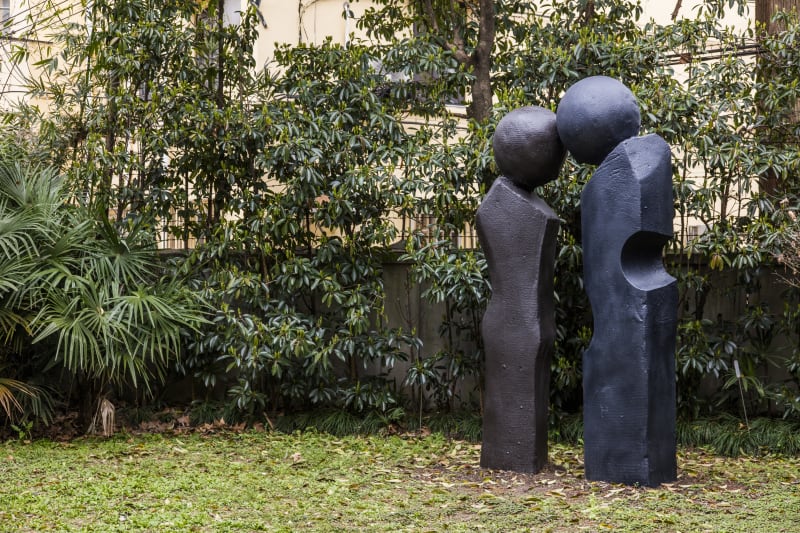In the exhibition “Defense”, Cai Zebin refers to the discourse about chess in the homonymous novel by the Russian-American writer Vladimir Nabokov that the dominator irrevocably falls into the ethical dilemma of being dominated. Much influenced by the Soviet short film Chess Fever (1925), the novel later contributes to The Luzhin Defence (2000) co-produced by UK and France. The key element that runs through all three works is a young man obsessed with the compositions in the chessboard, who is seeking for self-redemption yet finally loses his self-consciousness. The ups and downs of the plot and the conflicts between the characters are nothing more than rendering the tragedy the sense of lust and violence.
The artist is supposed to explore the collision between one’s inner world and the external realities by role-play through the painting process. However, it is indeed beyond our expectation that the “vulgar” forms of human nature is thoroughly reflected by the spatial configuration of the exhibition which engages our imagination upon the infinite change in the puzzles of chess. Mediated by the essential unity of opposites in the environing space, the pieces that occupy the images help re-establish the textual metaphors of “defense,” namely the devastating demonstration of siege. In Fulcrum and Caress, chess pieces are installed as the extensions of hands, feet and the other ending parts of human bodies in a vertical or horizontal, centripetal or centrifugal way, which involves the hidden rules in the game regulating the performance of body languages. Invitation to a Beheading and The Pray Without Hooliganism evoke the feeling of painful experience, where blades with trenchant edges are pointing at chess pieces, some being encircled and suppressed. In One Trap, One Wish and Nameless Flowers, the petal decorations give form to the sex awareness as being embodied in chess pieces and result in the formation of inclusions. The Third Countenance and Choose Neither Completeness Nor Amulet thus stem from a balancing act, incorporating these three narrative genres. On such a basis, the artist further constructs Futurist spectacles of energy and speed. Chess pieces in this vein are positioned as objects to be looked at, out of the player’s reach yet capturing details of the dilemma.
In Chess, the abstract order specified in the board essentially designates that each piece cannot possibly be a static entity but a continuous flow of changing structures, which may respond to the geometric logic in a composition or even make a turnaround. That is to say, the attraction of “Defense” not only lies in the silent images, but also the viewing actions randomly triggered by the integral layout. Faced with his own paintings, the artist seeks for a breaking back and forces the audience to be the pieces, as the subjects of the study of “Defense.” For example, Fulcrum, which is contiguous to Each Chess is a Wall, actually comes from the inaccessible room behind. The setting that arouses curiosity and suspicion properly tells the truth that the differentiation and reinforcement of the visual conception works as complementary to the exhibition text. And in Vision, a pair of chess pieces in human shape stand face to face, being dwarfed in a way but physically enlarged. The control over the scale again points to the formalisation of the visual conception. The reappearance of chess pieces in sculpture emphasises the corporality of visual senses. It is an individual operation that painting, the conventional medium, could bear a denial, backing out of “contemporaneity” and turning its own way around.



